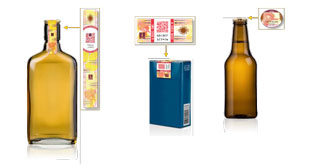
By Agnes E. Nantaba
Allen S. Asiimwe is the Country Director (Uganda) for Trademark East Africa (TMEA). She spoke to Agnes E. Nantaba about competitiveness and trade in the East African region.
What are the key elements in your management style as a manager?
My door is always open to anyone, which works in line with the open and transparent approach at TMEA. I am a very flexible and reachable but I am also a firm manager. As a manager, I ensure a very good work-life balance with responsiveness to the personal needs of staff as a way of reducing staff turnover.
How do you rate the performance of Ugandan products in the East African Community (EAC) market?
Uganda, Rwanda and Burundi are in an unfortunate but unique position as compared to their counterparts in the region because they are landlocked. So, Mombasa or Dar es Salaam Ports are critical for our survival. But increasingly, the markets of South Sudan and DR Congo have become critical because it’s where we export a lot. For Uganda, the biggest cost goes to transport. The studies we have conducted indicate that for instance for a shirt that comes into Uganda at Shs10,000 at least 30-40% of the cost is on transport.
Even when you import a container from China for instance, the cost of transporting the container from China to Mombasa is not as high as that from Mombasa to Kampala. So the delays along the corridors like the Northern corridor were adding a lot to the overall cost but of late we see a reduction in costs of trade across borders.
Before, it used to take an average of 18 to 21 days for one to import a container from Mombasa to Kampala but this has now reduced to less than 6 days which has boosted trade. We have seen strong political will to reduce the barriers for instance Presidents agreed to reduce road blocks and internal weigh bridges except at entry and exit points. The big political decisions have helped us move.
We have also worked with URA and other revenue authorities in the region to upgrade Custom Management Systems. We helped URA to upgrade to ASYCUDA World, which allows anyone in import and export to lodge their documents with URA without moving physically to Nakawa or Crested Towers, which takes less than two days compared to the ten days it used to take previously. We are working on installing the National Electronic Single Window as we also move to support horticulture and grain exports.
In May 2015, EALA passed a legislation to effectively eliminate non-tariff barriers to trade (NTBs) among EAC Partner States. How far have you gone in helping to execute this to increase intra-EAC trade?
We supported the research for the bill on recognizing that some of the NTB’s were unnecessary. For instance a trader exporting beef or milk to Kenya would just be stopped at the border and denied entrance without genuine reasons but the law comes in to reduce such incidences and penalize continuous rejection. That hasn’t been the case before and once the law is passed, rejection will totally be reduced. At country level, we have supported the strengthening of Non-Tariff Barriers Monitoring Committees (NMC’s) chaired by the Ministry of Trade and the Private Sector. The reporting mechanism for complaints is also getting faster and better.
What opportunities does the elimination of NTBs present to the Ugandan or other EAC economies?
The fact that there is a timely reporting system creates flexibility as a systematic approach based on institutions. We have seen a boost in trade among the countries. There is also trade environment amongst the EAC countries.
The level of competitiveness of Ugandan products remains low as compared to other countries in the EAC region such as Kenya. What factors are responsible for this performance?
It’s been a general trend as Ugandans have been used to a comfort zone of growing for food consumption but now it’s not enough as we need to boost exports. Uganda imports so much yet we can’t buffer it up with exports. So the question is how do we balance? Definitely we need to do a lot more about standards and marketing. We recognize that for the land-locked countries, there is still a huge challenge because they have little to export. Where we have like agricultural products, value addition is either not there or very low and the standards are also questionable. Our maize is for instance often rejected in Kenya due to quality standards and many times, they equate its quality as only fit for animal consumption and not human. However, we are working on such issues through focusing on standards, quality and market linkages.
How are you working as TMEA to help improve the country’s level of competitiveness?
We are focusing so much on standards, quality and market linkages. We are currently in partnership with Grain Council of Uganda through which six hubs have been created. They are centered in different parts of the country to test moisture content, train farmers’ agents on standards agreed and accepted at the regional level, bulking etc. We are also assisting exporters to acquire a standard mark, which can enable them export after value addition and access or penetrate markets. We have a $500,000 project through Uganda Women Entrepreneurs Association Ltd (UWEAL) targeting women entrepreneurs in the areas of value addition and export. We have also just signed a grant with Private Sector Foundation Uganda (PSFU) looking at a number of sectors including logistics, tourism, manufacturing and trade. It’s really about having a voice and engaging with the government especially on the Northern Corridor. We are supporting them to put the advocacy papers in place such that they are able to push the bar higher. We are also supporting the Uganda Shipper’s Council to negotiate with the ports authorities.
What effect has the implementation of the electronic cargo tracking system had on Uganda’s balance of trade?
It has been one of our successful projects in a quick turnaround time. One of the best and most effective decisions undertaken is the Presidents of Kenyan, Uganda, Rwanda and Southern Sudan move to use the Ugandan model of the electronic cargo tracking system. It has been a land mark achievement and we are now finalizing a document to expand the system to Mombasa. As of last month, we had an independent assessment that indicated that it previously took an average of eight days to transport a container from Malaba or Busia to Katuna because of the many stopovers. On top of that, ten containers would be escorted by a URA guard at the cost of the importer and incase of a mechanical breakdown for one of the trucks; they all had to park and wait. This is not the case anymore with the electronic cargo tracking as physical escorts are no longer required. Even the time and diversion of goods has reduced. A truck can move from Busia to Elegu in Southern Sudan within two days. Last year, URA reported that they saved Shs 25 billion in diversion alone. That is why Uganda has moved up in the ranking of the World Bank’s Doing Business report.
How far have works for the construction of a one stop border post at the Kagitumba and Mirama Hills border gone in a bid to increase the volume of traffic along the route?
There is a One Stop Border Act for the region that has only one country left to fully ratify. We came up with bilateral agreements between other countries like Tanzania and Rwanda to construct One Stop Border Posts (OSBP’s). For the Kagitumba-Mirama hills border, we handed it over to Ministry of Works last July, which also delegated URA as the lead agency for all OSBP’s in Uganda. We are however glad that there is strong partnership and cooperation.
What key areas should the government of Uganda focus on to expand and grow exports to the EAC region and beyond?
As TMEA, we have been doing a lot of analysis around growth and where it is most likely to happen and what we can do to facilitate it. And so we are coming up with growth hubs to facilitate growth along the corridors and in specific areas endowed with the different resources. Our call however to the government is for a conducive policy framework for the sector. The private sector has for a long time led in a regulation free environment. For instance, SME’s are not fully regulated because the SME policy has been pending for a long time. We cannot handle issues around financing SME’s. As we commend authorities like KCCA for doing a great job around simplifying systems and processes, there is more to be done. We discovered that small companies will collapse if they don’t formalize and comply with book keeping standards. So, the government should fast track that. We can’t be competitive if we don’t have issues of standards and policy addressed.
What is your projection of regional and international trade in East Africa in the next few years?
The trade volumes are growing but there is a huge trade imbalance with more imports as compared to exports. So for us to grow exports, we are targeting a headline result of a 10% increase in exports to the rest of the world and up to 25% increase in intra-regional exports by the end of this year. But in the next phase we shall consider a higher projection – looking at growth and employment with up to 10,000 jobs being created. Our reforms indicate that it can be done and that we can have regional integration working with stronger political will and better infrastructure among others. We also see great potential in the tourism sector driven by joint marketing through the single tourist visa.
 The Independent Uganda: You get the Truth we Pay the Price
The Independent Uganda: You get the Truth we Pay the Price


